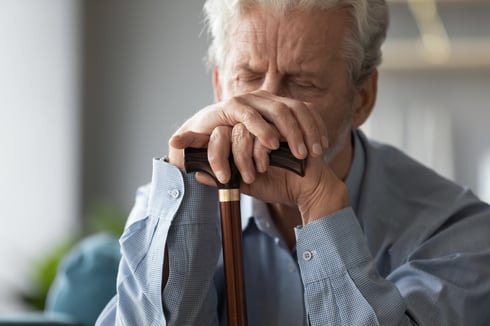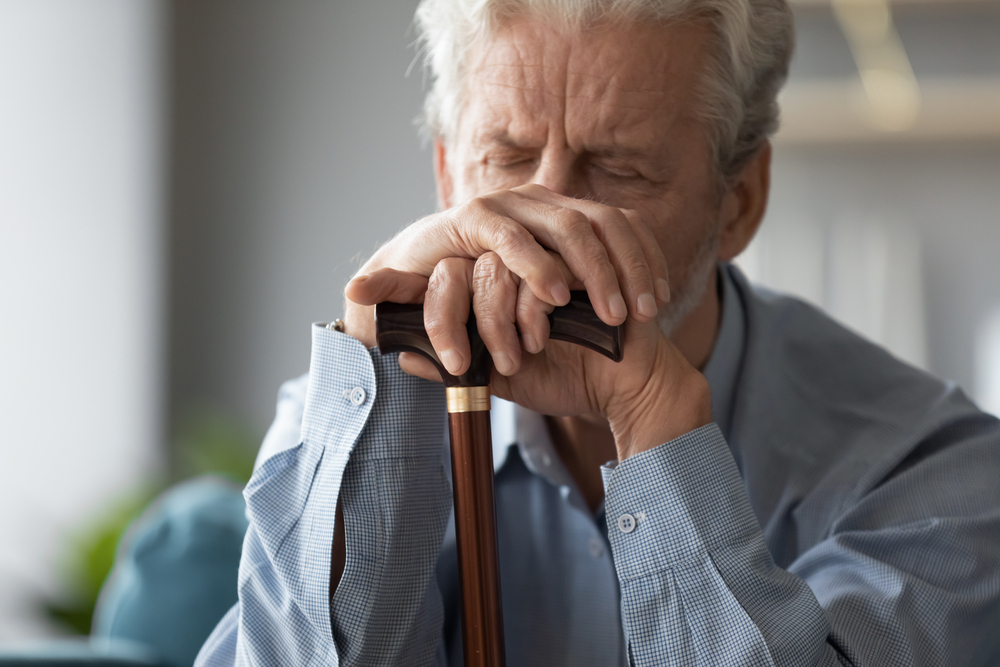Your Legs Hurt When Walking or Standing? Don't Ignore It.

Occasional leg pain after being on your feet all day or enjoying a good workout is normal. We’ve all been there. However, ongoing leg pain that prevents you from participating in your regular daily activities is a different story. Sometimes, these persistent symptoms are your body’s way of sending you an important message. If your leg pain causes you to avoid routine activities, hobbies, or exercise, or if you just feel slowed down in general, it is likely a sign of an underlying medical condition. It's not something you should simply accept as a part of getting older.
Key Takeaways
- Persistent leg pain that interferes with your daily life is not normal and should be evaluated by a primary care provider.
- Pain that occurs consistently while walking, especially up hills or stairs, could signal an artery blockage problem known as Peripheral Arterial Disease (PAD).
- Aching, throbbing, or heaviness in the legs in the evening, even while resting, is a classic symptom of a vein condition like venous insufficiency.
- Understanding the specific timing and nature of your pain can help you and your primary care provider identify the correct underlying cause, whether it's related to your arteries, veins, back, or joints.
Pinpointing the Cause of Your Leg Pain
Figuring out why your legs hurt can feel overwhelming. Is it serious? Will it go away on its own? As a vein specialist, I can share some observations that may give you insight into your condition. This information can help you have a more informed conversation when you see your primary care provider.
There are two main categories of leg pain that cause concern. The first is pain you get when you're walking. The second is discomfort you feel at the end of the day when you’re resting. By asking a few basic questions about your symptoms, you can start to narrow down the possibilities and point yourself in the right direction.
- Does the pain occur when you are standing and walking? This often points to a joint condition.
- Does the pain get better after you walk around a bit? This can suggest arthritis, where movement helps ease initial stiffness.
- Does the pain occur only when you are walking a specific distance? This can be due to back, joint, or artery conditions.
- Does the pain appear with specific positions, like bending over or twisting? This suggests a back issue might be the source of the leg pain.
- Is the pain worse at the end of the day, even when you are resting? This can be a sign of a vein condition or simply overused joints.
- Does the pain start in your back or hip and travel down the leg? This classic pattern often indicates a back problem, hip issue, or sciatica.
When Leg Pain Isn’t Normal: Common Causes
Let's delve deeper into the most common causes of abnormal leg pain that I see in my practice. Understanding these distinctions is the first step toward finding the right solution.
1. Arterial Disease
Arterial disease, often called Peripheral Arterial Disease (PAD), is a circulation problem where narrowed or blocked arteries reduce blood flow to your limbs. The key symptom of PAD is pain that occurs when you're active. If you get a cramping or aching pain in your thighs, buttocks, or calves when you're walking, it could indicate an artery blockage.
A tell-tale sign of this condition is its consistency. The discomfort usually occurs after walking the same distance every time, and it’s often worse when you go upstairs or walk up a hill. The pain typically goes away within about 10 minutes of sitting down and resting. Other symptoms associated with arterial disease can include:
- Impotence in men
- Loss of hair on the feet or calves
- A purple or bluish discoloration of the foot
- Tingling in the feet
While PAD is common, it’s a serious indicator of your overall cardiovascular health. It puts you at a higher risk of a heart attack or stroke. If you have these symptoms, the next step is to discuss them with your primary care provider, who may order an arterial ultrasound to get it sorted out.
2. Hip or Knee Joint Disease
Pain from hip or knee arthritis often strikes the moment you put weight on your leg. It tends to get better within a few minutes after you sit down and take the pressure off. If you’ve been on your feet all day, the joint may continue to ache for a while even after you rest, but sitting down will definitely help it feel better. People often report sensations of creaking, clicking, or crunching in the affected joint.
An oddity of the human body is that the nerve connections between the hip and knee are shared. This means that sometimes you might feel pain in your knee, but the problem is actually coming from your hip, and vice versa. This is best sorted out with a visit to an orthopedist, who will likely order X-rays or other scans to diagnose the issue.
3. Lumbosacral Disc Disease (Back Problems)
A pinched nerve in the lower back, often from a slipped or herniated disc, is a frequent cause of leg pain. This condition, also known as sciatica, almost always involves some back pain. When a leg nerve is pinched, the pain often seems to track down the outside of the leg, calf, and into the foot.
The pain comes on when the nerve is compressed, so certain positions like bending, lifting things, walking, or even how you sleep can trigger it. The real risk here is that if it progresses, it can lead to a loss of muscle function and permanent numbness in the leg. An evaluation by a specialist who treats this, such as an orthopedist or neurosurgeon, is the right next step.
4. Venous Disease
This brings us to the other major category of concerning leg pain: discomfort that happens when you’re not active. Many people can understand their legs aching after exercise or a long day of chores. But when you finally sit down in the evening to relax and your legs still ache and hurt, that’s not normal.
This type of discomfort is often an indication of a vein reflux problem, also known as venous insufficiency. In this condition, the tiny valves in your leg veins that are supposed to push blood back up to your heart become weak or damaged. As a result, blood flow becomes stagnant and pools in your lower legs. This stagnant blood flow lets inflammation build up, causing an aching, throbbing, or deep discomfort.
People often don't even describe it as "painful." They say their legs just throb, ache, or feel heavy and restless. But it can be bad enough that it makes people want to sit around and do nothing. This is actually the most common symptom that develops as a vein condition worsens. Over time, people become less active, burn fewer calories, and may gain weight, which is not healthy. Other signs of a vein condition include:
- Fatigue and poor sleep
- Restless legs
- Visible varicose or spider veins
- Swelling in the ankles or calves
It’s important to know that this condition is highly treatable, and modern procedures can provide prompt relief and an increase in energy.

You Don't Have to Live With Leg Pain
The bottom line is that you should not have to live with ongoing leg pain. The first step is to understand the cause so you can find the right solution. If chronic leg pain is limiting your life, or the life of someone you care about, please know that it is not a normal part of aging. A solution is available, and by arming yourself with information, you and your primary care provider can partner together on finding relief.
Frequently Asked Questions (FAQs)
1. How do I know if my leg pain is serious?
Your leg pain may be serious if it's persistent, worsens over time, or interferes with your ability to walk or perform daily activities. Pain that occurs with walking and stops with rest (possible arterial issue) or aching that happens at night while resting (possible vein issue) should both be evaluated. Any leg pain accompanied by chest pain, shortness of breath, or fever requires immediate medical attention.
2. What is the difference between artery pain and vein pain?
Artery pain (claudication) typically occurs with activity, like walking a certain distance, and feels like a muscle cramp that resolves with rest. Vein pain is often described as an aching, throbbing, or heavy sensation that is worse at the end of the day, especially after prolonged standing or sitting, and often feels better with leg elevation.
3. Can I have more than one cause for my leg pain?
Yes, it is common for people, especially as they get older, to have more than one condition contributing to their leg pain. For example, you might have both arthritis in your knee and a vein condition. This is why a thorough evaluation by a primary care provider is so important to identify all the contributing factors.
4. What kind of provider should I see for leg pain?
Start with your primary care provider. They can perform an initial examination, listen to your symptoms, and help determine the likely cause. From there, they can refer you to the right specialist, whether it's a vein specialist, an orthopedist for joint issues, or a cardiologist for artery problems.



